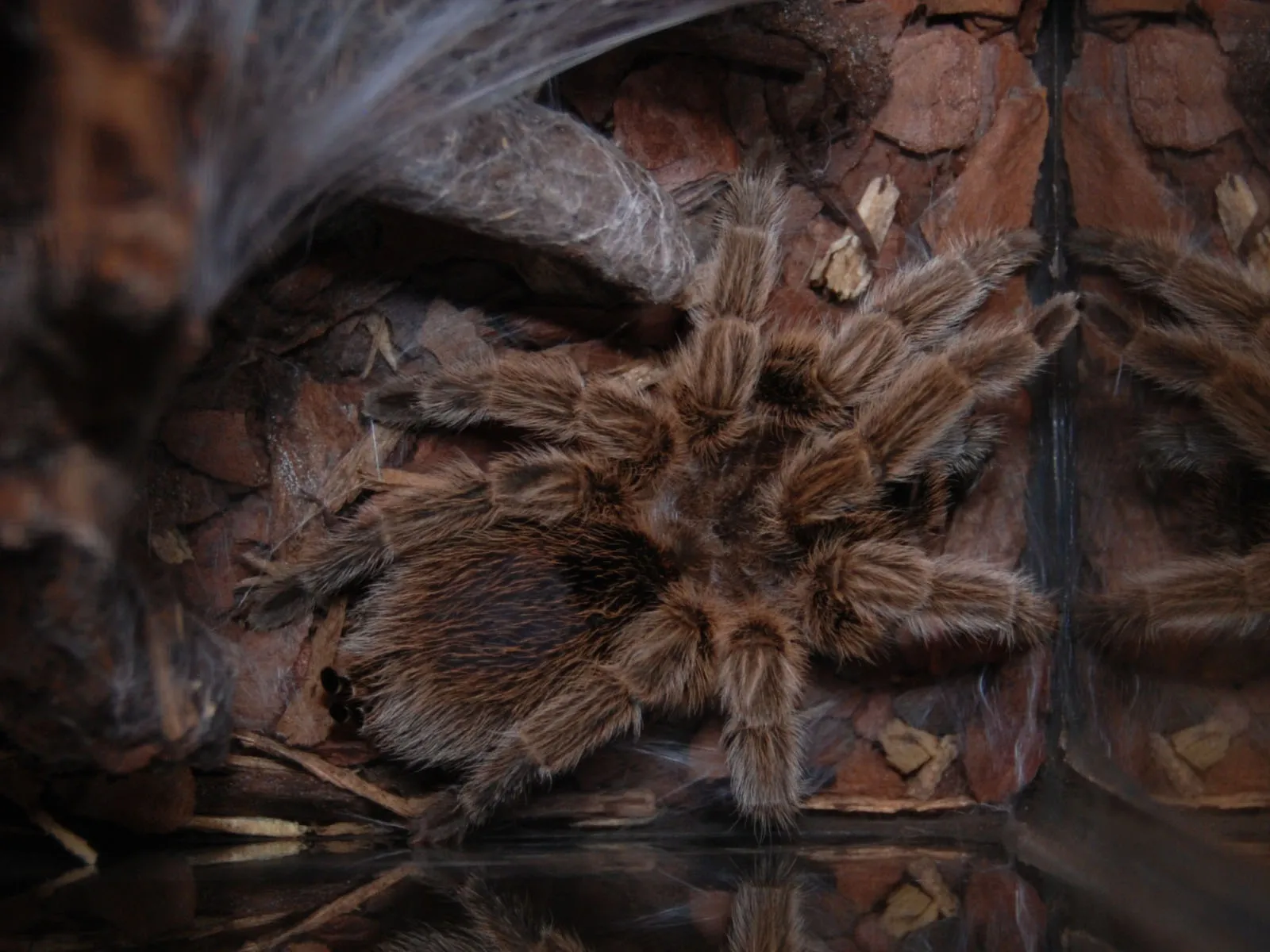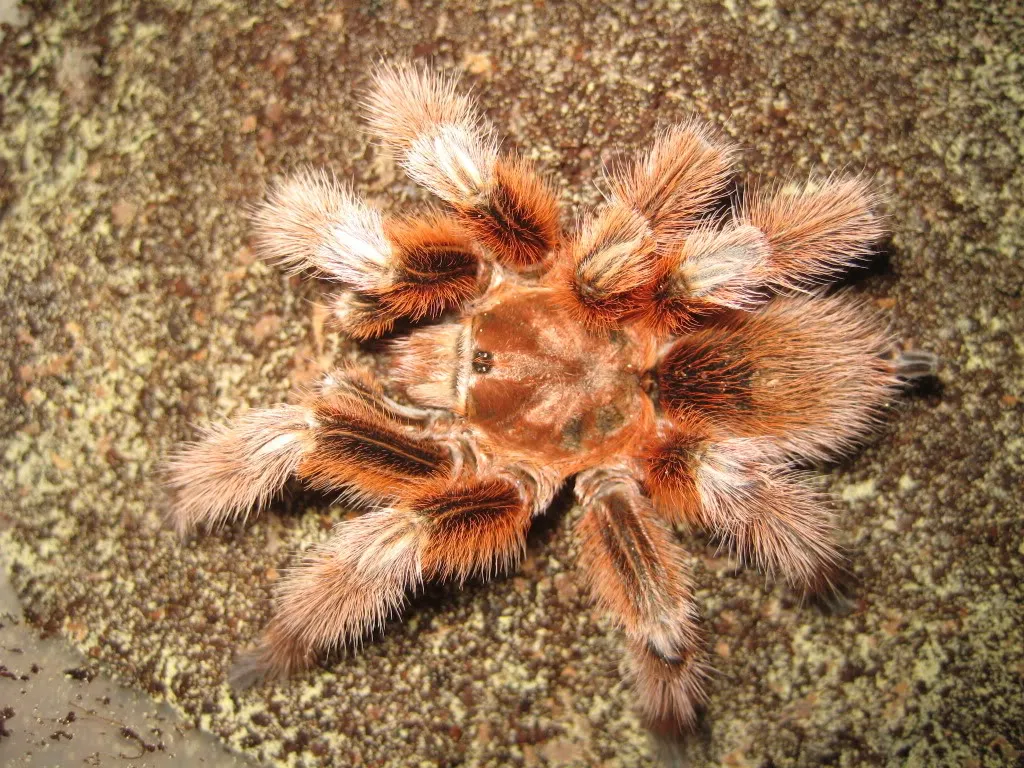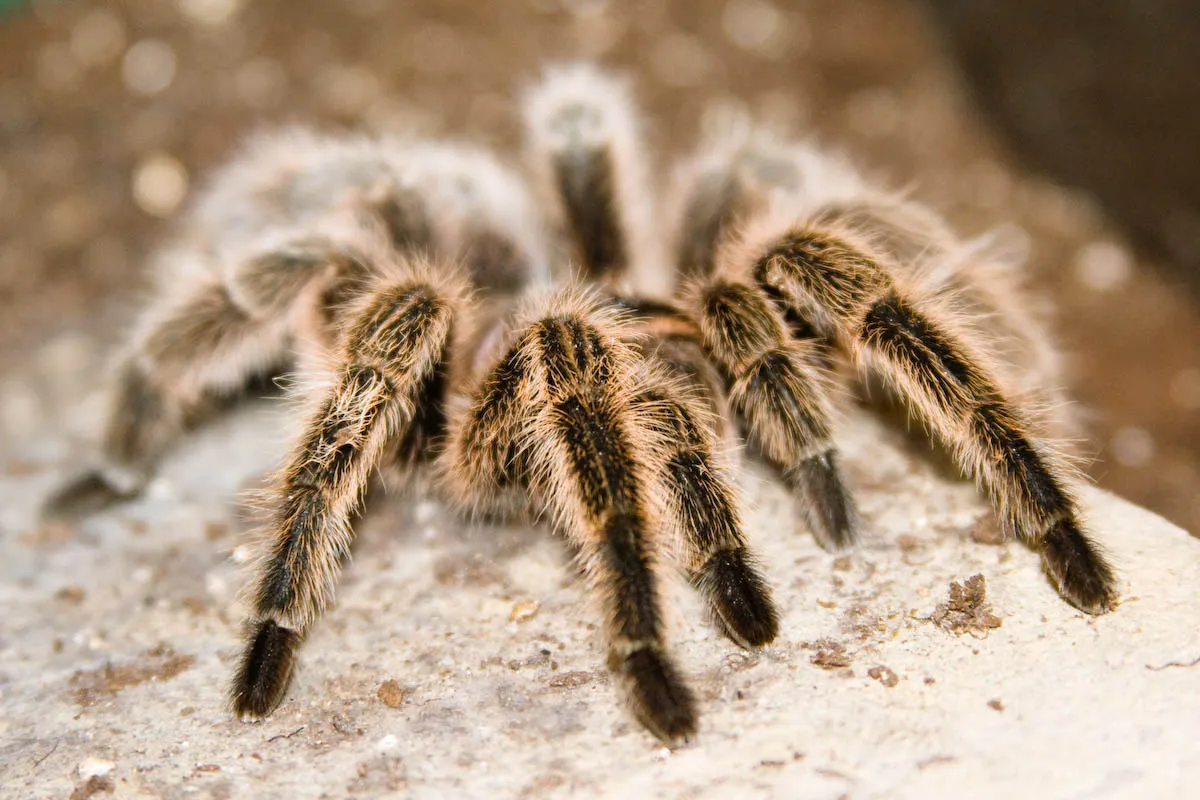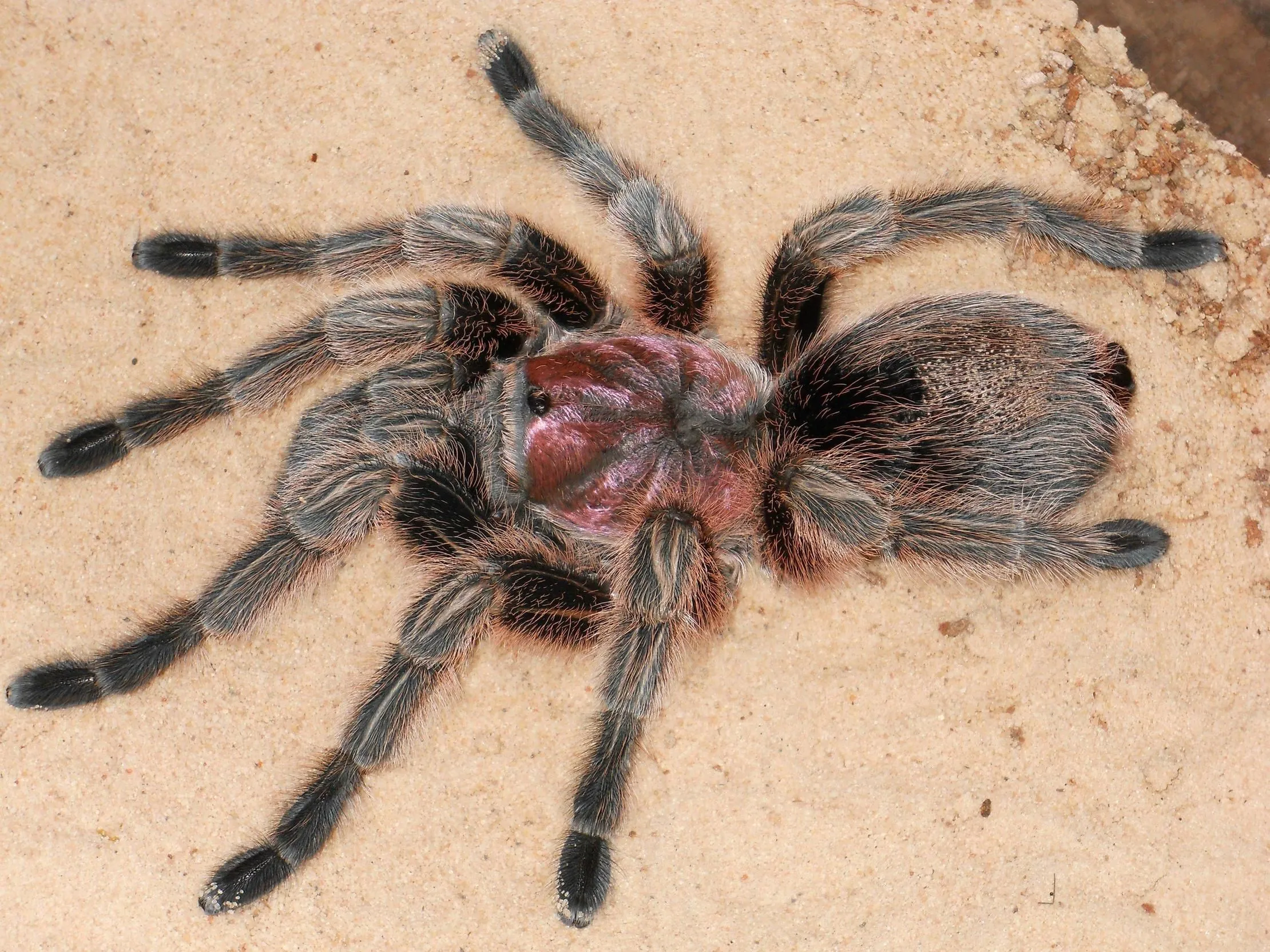Chilean Rose Tarantula Origins and Habitat
The Chilean Rose Tarantula, scientifically known as Grammostola rosea, is a fascinating creature, popular among tarantula enthusiasts. This introduction will delve into the origins and natural habitat of this captivating arachnid. Understanding where these tarantulas come from provides crucial insight into their care and behavior. It helps in replicating their natural environment, leading to a healthier and happier tarantula. Knowing their background is the first step in becoming a responsible tarantula owner. The Chilean Rose Tarantula’s journey from its native lands to our homes is a story of adaptation and resilience, making it an even more intriguing pet. Let’s explore the world of the Chilean Rose Tarantula, beginning with its roots.
Where Do Chilean Rose Tarantulas Come From?
Chilean Rose Tarantulas are native to the arid and semi-arid regions of South America. Primarily, they are found in Chile, Argentina, and Bolivia. These spiders thrive in diverse environments, including grasslands, scrublands, and deserts. Their ability to adapt to various conditions contributes to their popularity as pets, as they are relatively easy to care for compared to tarantulas from more specific climates. The spiders’ natural habitats influence their needs, such as the need for a dry, well-ventilated enclosure. The knowledge of their origin ensures that pet owners can create an environment that meets their needs.
Natural Habitat and Climate

In their natural habitat, Chilean Rose Tarantulas experience a range of temperatures and humidity levels. They are accustomed to warm temperatures, with highs reaching up to 85°F (29°C) during the day and cooler nights. They generally prefer a dry environment, with low humidity levels. The spiders burrow underground or hide in crevices to escape extreme temperatures and predators. Providing a similar environment in captivity is crucial for their health. Understanding the climate they are used to will help in providing appropriate heating and ventilation, ensuring the tarantula thrives.
Physical Characteristics and Appearance
The Chilean Rose Tarantula possesses distinct physical characteristics that make it easily recognizable. This section will examine its size, distinctive features, and coloration, providing a visual understanding of this remarkable spider. Knowing these characteristics is essential for identifying a healthy tarantula and understanding its life stages. The appearance of a Chilean Rose Tarantula is not only visually appealing but also a window into its health and well-being. This knowledge aids in providing proper care and appreciating the beauty of this amazing creature. Let’s explore these details further, ensuring a deeper understanding of the Chilean Rose Tarantula.
Size and Distinctive Features
Chilean Rose Tarantulas are medium-sized tarantulas, with females generally larger than males. Adult females can reach a leg span of up to 5-6 inches, while males are usually a bit smaller. Their bodies are covered in setae, or small hairs, which are sensitive to touch and vibrations. These hairs help them navigate their environment and detect potential threats. The distinct features include a large, rounded abdomen and robust legs. Understanding the size and features provides insight into their behavior, and handling. This information is useful for determining the appropriate enclosure size and the spider’s overall health.
Coloration and Markings

The coloration of the Chilean Rose Tarantula is one of its most striking features. They are typically a combination of brown, tan, and pink hues. The carapace, or the top part of the cephalothorax, often has a bronze or golden sheen. The legs are usually a reddish-brown color, while the abdomen can vary from light brown to dark brown with pinkish hairs, giving rise to its ‘rose’ name. Their overall appearance provides excellent camouflage in their natural habitat. The color is impacted by factors like age and diet. Color is an important aspect to look for when choosing a healthy tarantula.
Behavior and Temperament
Chilean Rose Tarantulas are known for their generally docile and calm temperament, making them a popular choice for novice tarantula keepers. This section will cover their common behavior patterns and considerations for handling and interaction. Understanding the behavior of a tarantula is key to a safe and rewarding ownership experience. Knowledge of their temperament allows owners to provide the necessary care, ensuring the well-being of both the spider and the handler. It also increases the ability to interpret its actions, contributing to a deeper bond and an enhanced appreciation for this amazing species. Let’s dive into the common behaviors and handling guidelines.
Common Behavior Patterns
Chilean Rose Tarantulas exhibit several common behavior patterns. They are generally slow-moving and spend a lot of time in their burrows or hiding places. These tarantulas are primarily nocturnal, becoming most active during the night. When threatened, they may flick urticating hairs from their abdomen as a defense mechanism. They may also display a threat posture, raising their front legs and fangs. Understanding these behaviors will help owners provide appropriate habitat and handling. Observing their behavior will allow for identifying stress or potential health issues, allowing for timely intervention.
Handling and Interaction

While generally docile, Chilean Rose Tarantulas should be handled with caution. It is recommended to handle them only when necessary. The spiders are sensitive and can be easily stressed. If handling, do so while sitting on the floor to minimize the risk of injury. Avoid sudden movements and always supervise children. It is important to be aware of the tarantula’s threat posture, which can indicate its stress level. Many owners choose not to handle their tarantulas at all, preferring to observe them from a distance. Regular, gentle interactions, and observing behavior, are more beneficial than direct handling.
Lifespan and Life Cycle
The lifespan and life cycle of the Chilean Rose Tarantula are fascinating aspects of their biology. This section will cover the average lifespan, the molting process, and the stages of development. Understanding these aspects will provide a deeper appreciation for the tarantula. It also helps in providing the correct care and anticipating changes in their behavior. The lifespan is unusually long, while the molting process is a unique occurrence that owners need to be aware of. Let’s explore these significant life stages.
Average Lifespan of a Chilean Rose Tarantula
Chilean Rose Tarantulas are known for their long lifespans. Females can live for up to 15-20 years, while males typically live for 5-10 years. The difference in lifespan is due to the molting process, which continues throughout a female’s life, allowing her to grow larger. The lifespan can be influenced by their environment, diet, and overall health. Providing optimal care will help in extending their lifespan. A long-lived tarantula provides years of enjoyment and fascination for the owner.
Molting Process

Molting is the process where the tarantula sheds its exoskeleton. During this process, the tarantula will typically lose its appetite and may appear lethargic. It will lie on its back, and the old exoskeleton will split open. The tarantula then pulls itself out of the old skin, revealing a new, larger one underneath. After molting, the tarantula is vulnerable and soft. It will take time for the new exoskeleton to harden. It is important to avoid handling the tarantula during this time. Providing a humid environment and not disturbing it will help the tarantula successfully complete the molting process. The molting process signifies growth and overall health.
Diet and Feeding Habits
The diet and feeding habits of the Chilean Rose Tarantula are straightforward, making them easy to care for. This section will cover what they eat and the appropriate feeding frequency. Understanding their dietary needs is fundamental to ensuring the tarantula stays healthy and active. A proper diet is crucial for their growth and overall well-being. The diet impacts the tarantula’s overall vitality. This also allows owners to monitor the spider’s health and growth. Now, let’s learn more about what they eat and how often to feed them.
What Do They Eat?
Chilean Rose Tarantulas are primarily insectivores, meaning they eat insects. Their diet in captivity usually consists of crickets, mealworms, and roaches. It is important to provide insects that are appropriately sized for the tarantula. Avoid feeding insects that are too large. It can be difficult for the tarantula to consume and can pose a threat. The insects should also be gut-loaded with nutritious food before being fed to the tarantula. Gut-loading ensures that the tarantula gets the necessary vitamins and minerals. Variety in the diet is also important, and it can include occasional treats. Feeding high-quality insects will ensure the tarantula receives the nutrients it needs.
Feeding Frequency and Amounts

Feeding frequency depends on the tarantula’s age and size. Spiderlings should be fed 2-3 times a week, while adult tarantulas can be fed once a week or every other week. The amount of food should be appropriate for the size of the tarantula. Overfeeding can lead to health problems. It’s important to remove uneaten food within 24 hours to prevent mold growth. Clean water should always be available in a shallow dish. Adjust the feeding schedule depending on the tarantula’s appetite and molting schedule. Monitoring their eating habits will help to ensure they get the right amount of food. This helps keep them healthy and thriving.
